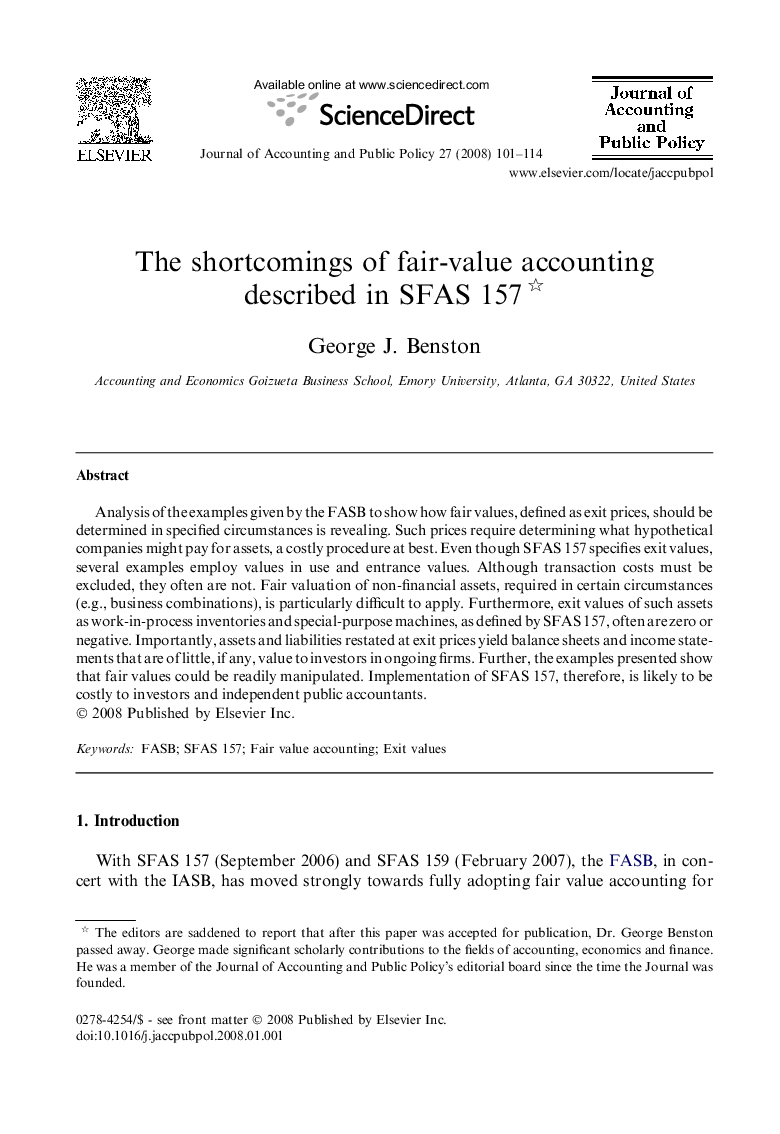| Article ID | Journal | Published Year | Pages | File Type |
|---|---|---|---|---|
| 1006119 | Journal of Accounting and Public Policy | 2008 | 14 Pages |
Analysis of the examples given by the FASB to show how fair values, defined as exit prices, should be determined in specified circumstances is revealing. Such prices require determining what hypothetical companies might pay for assets, a costly procedure at best. Even though SFAS 157 specifies exit values, several examples employ values in use and entrance values. Although transaction costs must be excluded, they often are not. Fair valuation of non-financial assets, required in certain circumstances (e.g., business combinations), is particularly difficult to apply. Furthermore, exit values of such assets as work-in-process inventories and special-purpose machines, as defined by SFAS 157, often are zero or negative. Importantly, assets and liabilities restated at exit prices yield balance sheets and income statements that are of little, if any, value to investors in ongoing firms. Further, the examples presented show that fair values could be readily manipulated. Implementation of SFAS 157, therefore, is likely to be costly to investors and independent public accountants.
